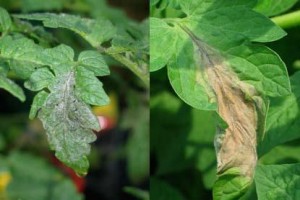
Figure 1. Late blight lesion on infected tomato leaf at garden center and in a home garden.
taken from a pdf at From njfarmfresh.rutgers.edu – click this link to get it directly.
Irish Potato Famine Disease affecting Gardens and Farmers throughout the Greater Northeast
Revised by A. Wyenandt, NJAES, Rutgers University and M.T McGrath, Cornell University
Original article by Thomas A. Zitter, Cornell University, Ithaca, NY
June 29, 2009 – Late blight, caused by Phytophthora infestans, is a serious disease that affects tomato and potato around the world. Late blight can become a serious problem because it can quickly kill affected plants and its spores are easily carried in wind currents to infect other susceptible plants in even the most remote areas in our region.
Late blight occurs sporadically in the Northeast in any given year because farmers diligently use methods to prevent the pathogen from surviving overwinter. Since our summer thus far has been cool with frequent rains, weather conditions have been very conducive for late blight development. Currently, all tomato and potato plants grown in home gardens and in commercial fields are susceptible to late blight!
The Hack – unfortunately, there’s only one known remedy for this, but “… Homeowners do have a few products that are registered for use; the most effective ones have the common name of chlorothalonil which will be on the label. These products are only effective if used before the disease appears and should be reapplied every 5-7 days if cool, wet weather persists. Chlorothalonil is a protectant fungicide, with no systemic movement in the plant, so thorough coverage is necessary. Copper applications are not as effective as chlorothalonil. …”









Recent Comments